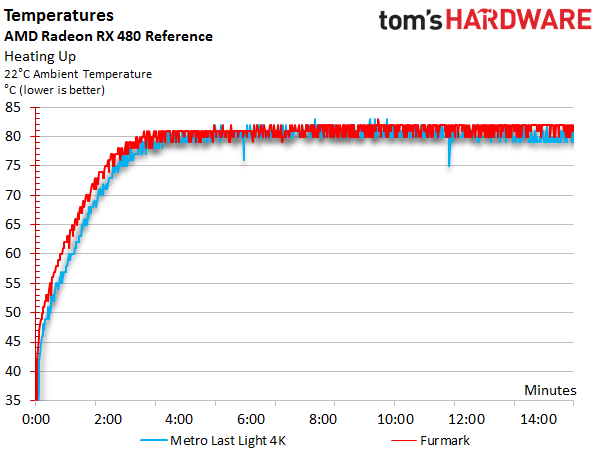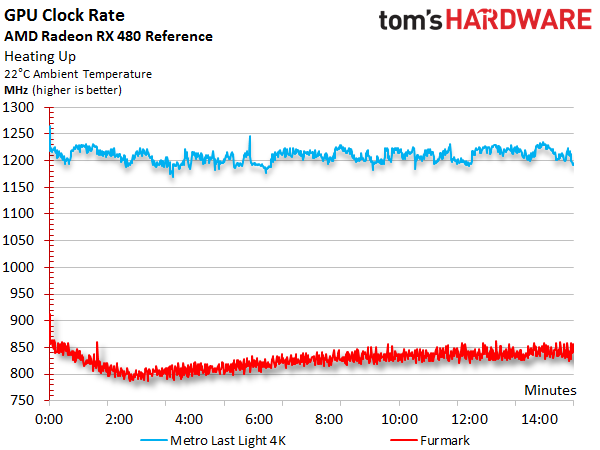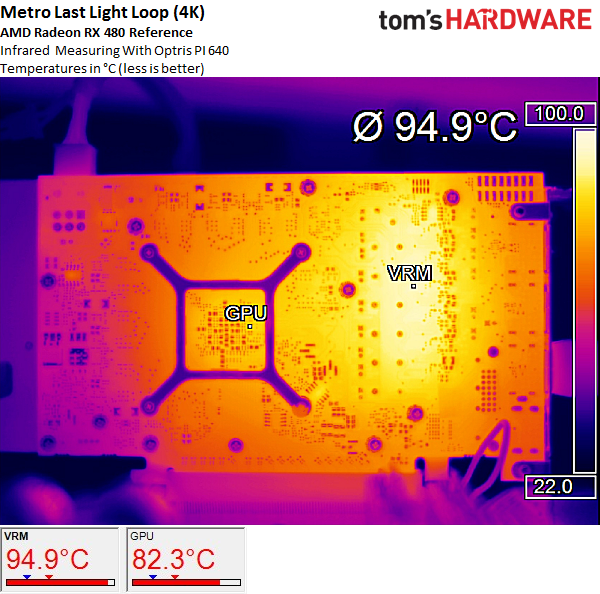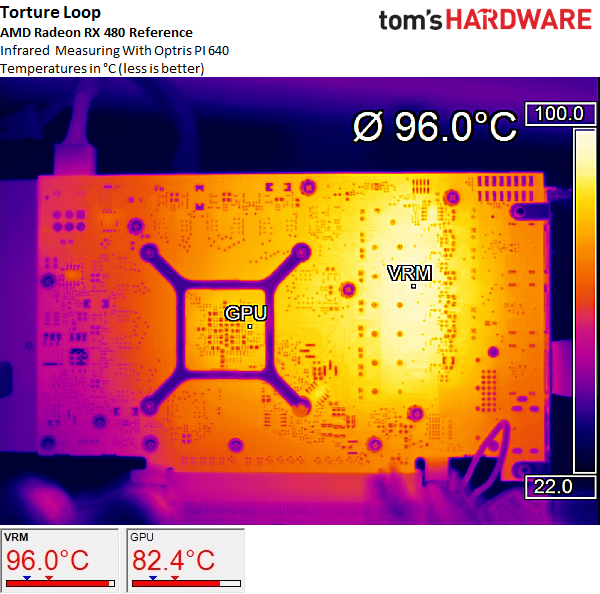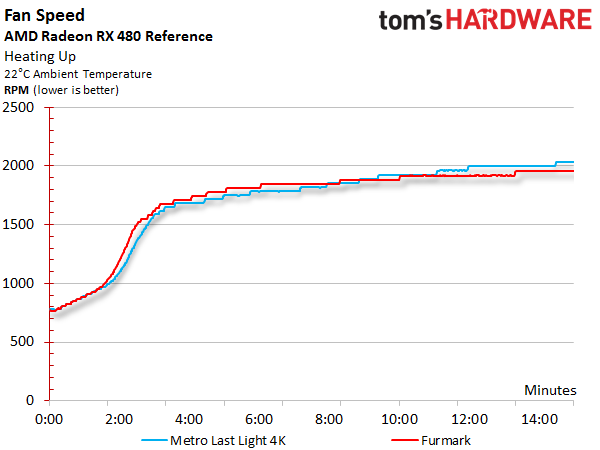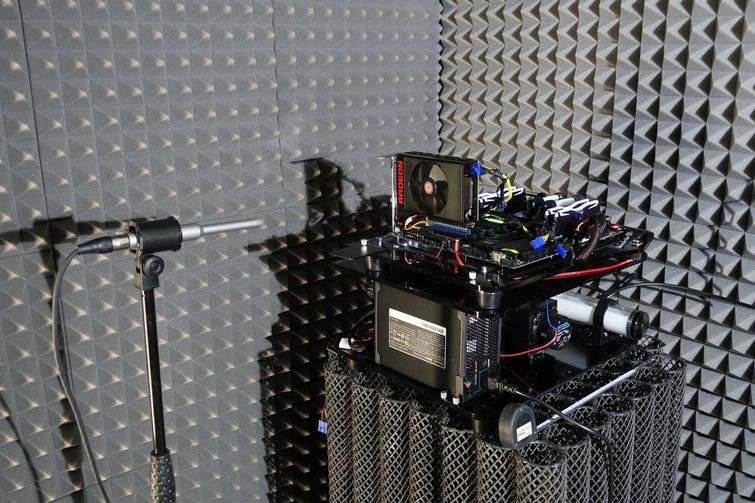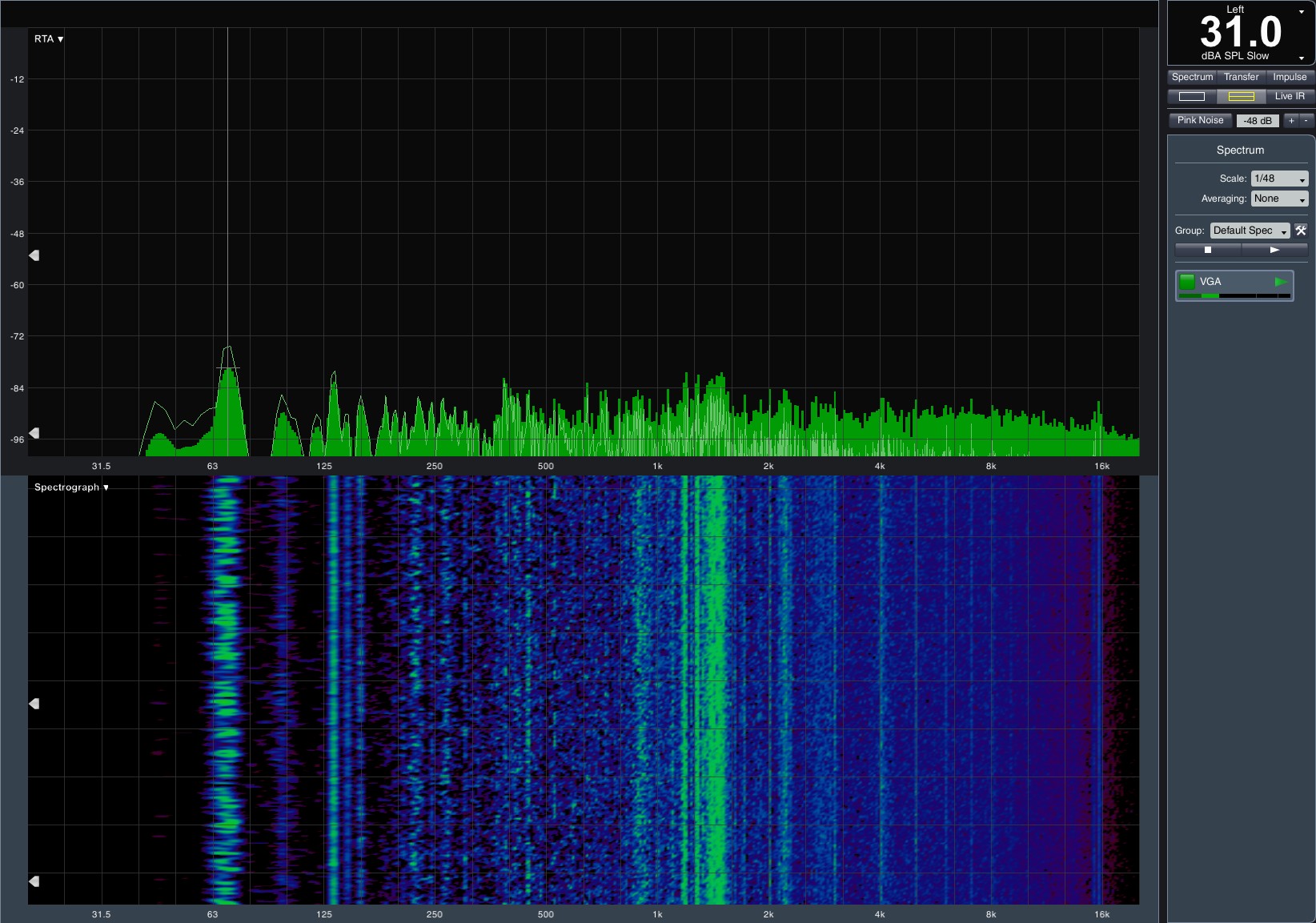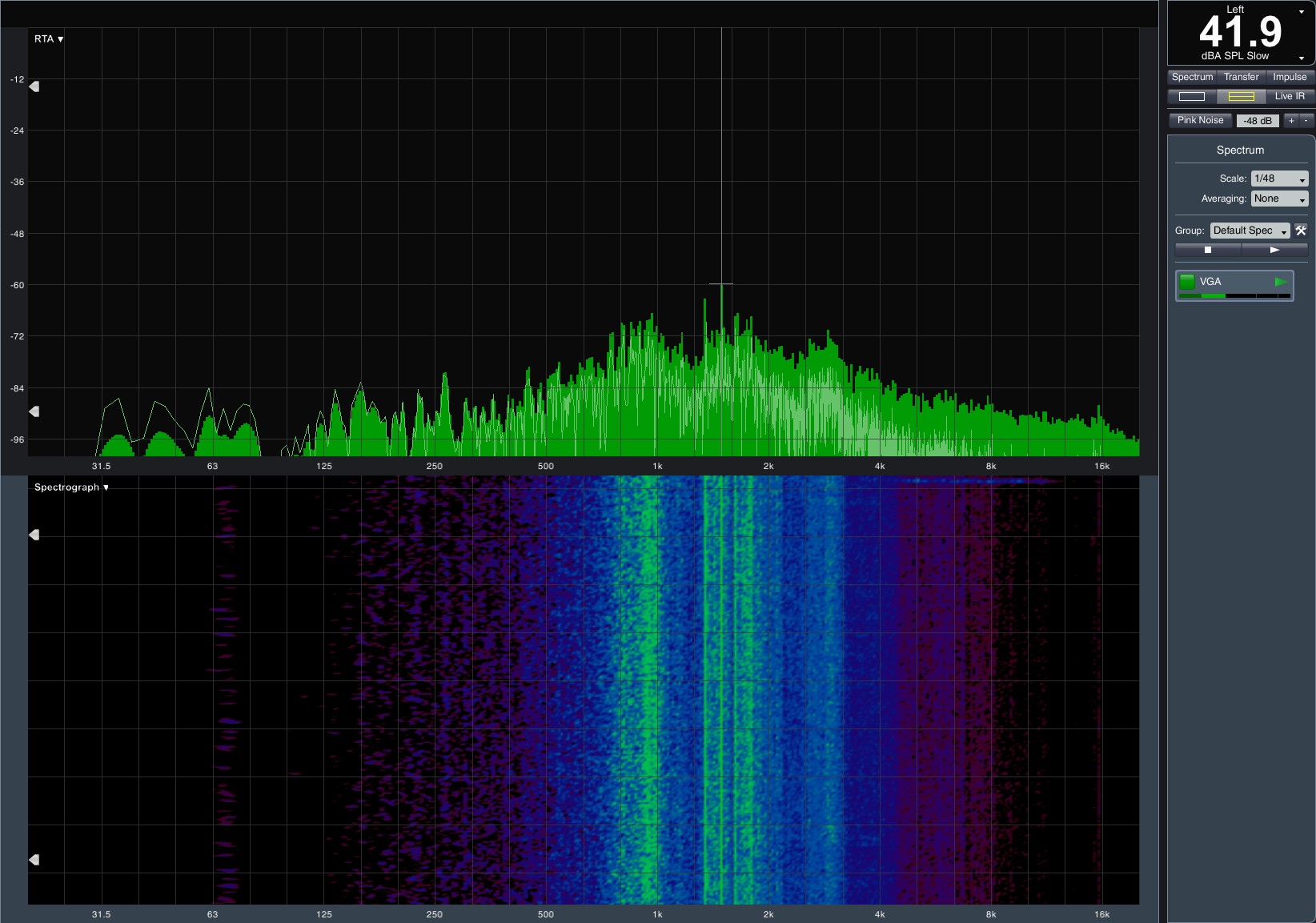AMD Radeon RX 480 8GB Review
Temperature & Noise Results
Temperature And Clock Frequency
We measured temperatures and clock rates under real-world conditions, inside a Nanoxia Deep Silence 5 chassis, just as we did for our GeForce GTX 1080 launch article.
The temperatures during the gaming loop and stress test were similar, which is hardly surprising. There’s only a 4W power consumption difference between the two, and the fan does its best to keep the card’s temperatures from climbing too high.
After adding frequencies to the mix, we find that the Radeon RX 480 is more stable than Nvidia’s Pascal-based cards. Clock rate still changes based on scene being rendered, but PowerTune doesn’t react as quickly as GPU Boost 3.0. AMD’s approach is different.
Infrared Analysis
For more information, check out Measurement Science: Taking Accurate IR Thermal Readings.
In spite of the AMD's crowded PCA, the voltage converters are far enough away from the GPU and its package that they don't have a thermal impact on the processor. One of the memory modules is directly between the voltage converters and GPU, though. It does hit 88 degrees Celsius, which is slightly above its ceiling according to Samsung's technical specifications.
We’ve documented how the card heats up in a time-lapse video. The first 10 minutes are compressed into just two:
The picture barely changes during our stress test. This isn’t surprising due to the very similar power consumption numbers. The voltage converters do gain approximately 1 degree Celsius, but that's hardly worth mentioning.
Get Tom's Hardware's best news and in-depth reviews, straight to your inbox.
We have a time-lapse video that’s played back at five times the original speed for this workload, too.
Fan RPM and Noise
Fan speed is directly related to the amount of waste heat that needs to be, literally, blown away. The faster the fan spins, the noisier the graphics card will be.
So, how does the Radeon RX 480 fare? As usual, we measured the noise level in our noise-dampened test chamber using a water-cooled system constructed for just this purpose.
The lower measurement limit is 22 dB(A) due to the near-silent system's hardware. Then again, we’ll never see (or hear) less than 22 dB(A) with an actively cooled graphics card like this one.
| Test System and Equipment | |
|---|---|
| Microphone | NTI Audio M2211 (with Calibration File, Low Cut at 50Hz) |
| Amplifier | Steinberg UR12 (with Phantom Power for Microphones) |
| System | Graphics Card Test System with Optimized Water Cooling - Intel Core i7-5930K @ 4.2GHz, Water-Cooled - Crucial Ballistix Sport, 4x 4GB DDR4-2400 - MSI X99S XPower AC - 1x Crucial MX200, 500GB SSD (System) - 1x Corsair Force LS, 960GB SSD (Applications, Data) - be quiet! Dark Power Pro, 850W Power Supply Unit (PSU) |
| Water Cooling | - Alphacool VPP655 Pump (Undervolted) - Alphacool NexXxos CPU Cooler - Phobya Balancer - Alphacool 24cm Radiator - 2x 12cm Noiseblocker eLoop Fan @ 400 RPM |
| Software | Smaart v.7 |
| Measurement Chamber | Custom-Made Proprietary Measurement Chamber, 3.5 x 1.8 x 2.2m (LxDxH) |
| Measurement Position | Perpendicular to Center of Noise Source(s), Measurement Distance of 50cm |
| Measurement Data | - Noise Level in dB(A) (Slow), Real-time Frequency Analyzer (RTA) - Graphical Frequency Spectrum of Noise |
We take our first noise readings during the gaming loop, after the card reaches its maximum temperature.
At idle, we measure 31.0 dB(A). Seeing that this is only slightly above a typical living room's noise level, the result is pretty good. Unfortunately, the radial fan is a bit grumpy when it spins slowly, presenting a noise profile that emphasizes low frequencies.
Even though the 480's acoustic performance at idle sounds good based on our benchmark numbers, there's a risk that the card will turn your PC into a resonance chamber. This means that the Radeon RX 480 has the potential to be louder in a case than on an open test bench. This isn’t a huge problem, but a solid chassis is definitely the way to go. Cheap tin cans need not apply.
The Radeon RX 480 does really well under load. During our gaming loop, it’s no louder than Nvidia's reference GeForce GTX 1070. This is in spite of its higher power consumption, simpler cooling solution and more mainstream construction.
Finally, AMD gives us a reference card that doesn't sound like a hair dryer under heavy load. Well-done!
MORE: Best Motherboards
-
chaosmassive this card will be my replacement of HD 7770 card for sure !Reply
thanks for the reviews, though power consumption from PCI slot is real concern here
-
asukafan2001 Seems like a decent card for what it is and what its target market is. Based off where the 1070 and 1080 fall in though i cant help but feel the 1060 which is targeted for the fall might make things uncomfortable for th 480. Nice to see amd working on power efficency though. That has always been a weakspot for them.Reply -
JeanLuc I can't help but think you need to revist this. The AOTS benchmark don't look right, the 480 is behind the 390, 390X and GTX980 in DX12.........I know this card is mid range and all that but it is 14nm with a revised chip design, surely it should be ahead of the last generation mid range cards even if it's by just a small amount.Reply
Edit: I stand corrected. Just looked at Anandtech and there results confirm what Toms is reporting. -
Oranthal Wow all the hype and it didn't deliver on any of it. Yes its an improvement but a marginal one and the supply is non existent. So its a paper launch as well. I was hoping this would be the solution to my 1440p 144hz freesync setup. Really disappointed, then again nothing lives up to online hype now. Nvidia's offerings hit the performance numbers we wanted but are insanely expensive. So I will keep waiting to see if drivers and oc's helps this card out or hope the 490 delivers.Reply
Edit: The cards are 100% available on newegg, I guess it took them until 9:30 to have them show up. I am still completely let down and hoping the partner cards and new drivers deliver on some performance gains. I guess its my fault for believing the hype that AMD could produce the same jump in the low to mid tier that Nvidia did for the high end. -
envy14tpe All that hype and finally the release....ahhh. We now have competition in the market place. The 960 and 970 have a good contender. Let's just hope price stays low as AMD doesn't play Nvidia's limited supply game.Reply
In Taiwan (where I am). There is one listing today selling the Gigabyte for $315usd. Prices need to get worked out. At that price I can get a 970.
-
rmpumper So basically AMD caught up to nvidia's now obsolete 9xx series? So much for the hype, though not unusual for AMD.Reply
